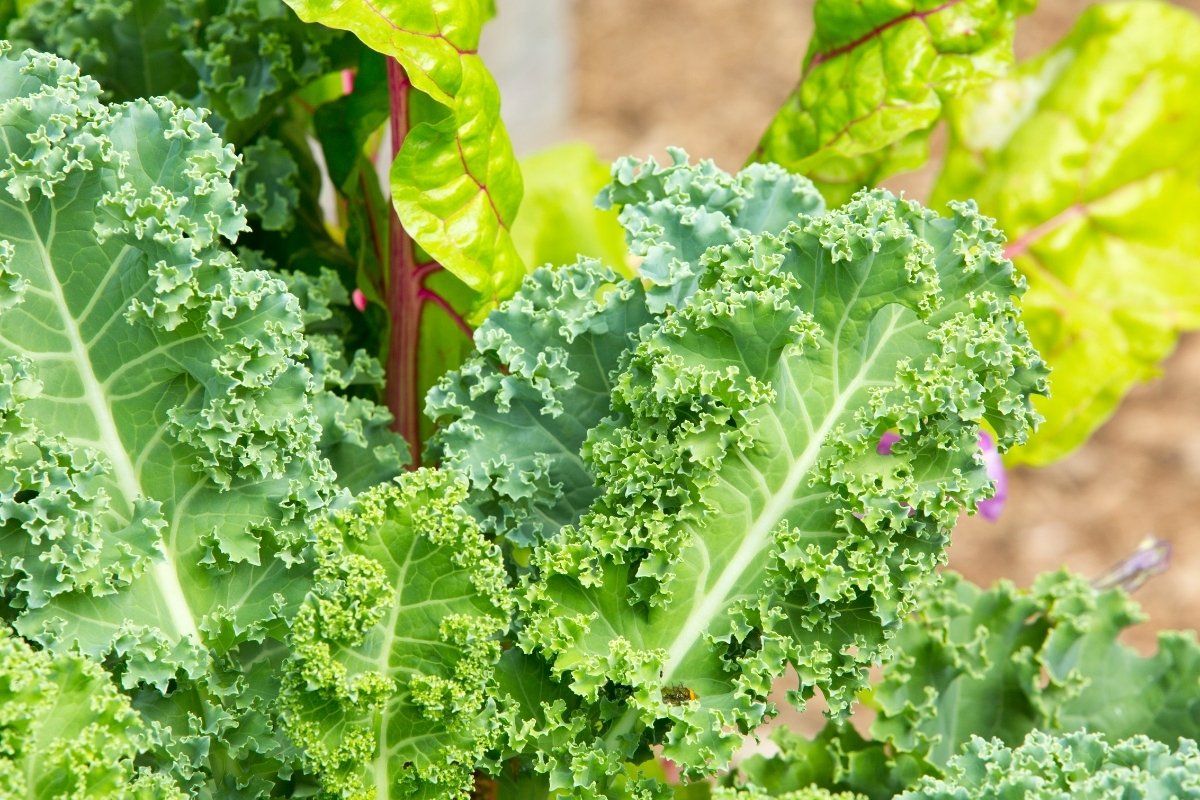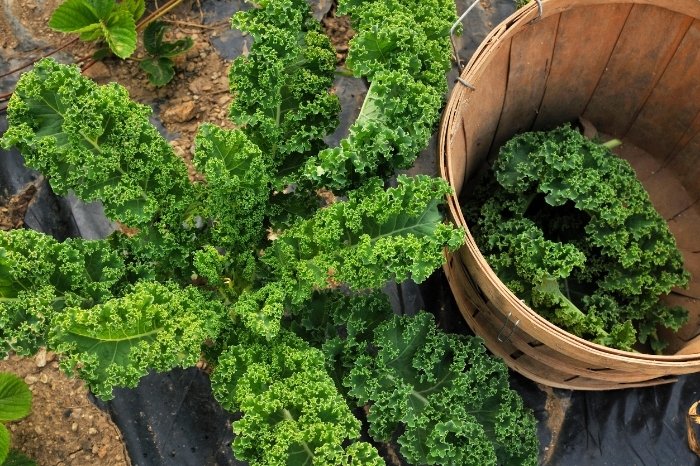Last Updated on November 9, 2022 by Cristina
Kale is one of the healthiest foods and can be enjoyed in many different dishes. Growing kale indoors under lights is a great way to have a fresh supply of kale in your home. While it is typically grown outdoors, with the right steps you can grow kale indoors all year round.
Whether for salads, sandwiches, or even smoothies, kale makes a healthy addition to your diet. While it may take some time and work, you can successfully grow kale inside. There are several great varieties you can choose from to grow in your home.
What Is Kale?
Kale is a hardy cool-season crop that is one of the most nutritious vegetables you can eat. It is relatively fast-growing and comes back every year, but as a biennial plant, it takes two years to complete its growth cycle. In the first year, it grows leaves and in the second year, it grows seeds and flowers.
Kale is a member of the cabbage family and is commonly grown in gardens. It is a cold-hardy, resilient, non-heading green. It comes in a variety of colors ranging from bright green to purple and features crinkled to curly leaves, which can make them attractive as ornamental plants as well.
Can You Grow Kale Indoors? Growing Kale Indoors Under Lights
With the proper steps, you can successfully grow kale in containers both indoors and outdoors. Just be sure the container is large enough for the variety of kale you are growing.
Kale is one of the most nutrient-dense foods in the world. It is packed full of Vitamin A, Vitamin K, and Vitamin C. It is also an excellent source of antioxidants and minerals, making it a very healthy addition to your diet.
Take Out Time to Also Read:
- Growing Peppers Indoors In Winter: 5 Helpful Steps
- Growing Pumpkins in Containers Indoors: 5 Helpful Steps
Growing Kale Indoors Under Lights: Can You Grow Kale In A Pot?
If you enjoy eating kale, you will want to know how to grow kale indoors. Growing kale indoors can be easy as long as you take the right steps and provide your kale with the right growing environment. Fortunately, you can grow kale in a pot as long as it is large enough and you provide it with the light, nutrients, and water it needs to thrive.
Prepare Your Seed Tray
Prepare your seed tray or container by adding potting soil that is rich in organic matter. After adding your potting soil, spray your soil with a spray bottle to moisten it.
Plant the Seeds – Growing Kale Indoors Under Lights
After preparing your container or seed tray, add your kale seeds. Create holes that are 1/4-1/2 inch deep and place two to three kale seeds per soil. Cover the holes up with soil and then moisten the soil with a spray bottle.
Place Under a Grow Light and Water Regularly
Kale needs at least 10-18 hours of light to grow if you are using an LED grow light. Place the light about 18 inches above your container or growing trays, with the brightness ideally set between 50-75%.
Water your kale plant regularly to keep the soil moist but not soggy. It will grow well in temperatures between 60 to 70 degrees Farenheit.
Transplanting Kale Plant
Once your kale plant is a couple of inches tall, you can transplant it into a pot. You will want a container with potting soil rich in organic matter that is at least two gallons big. A clay pot with good drainage is a good option for growing your kale plants.
Sow Right Seeds – Kale Seed Collection for Planting – Non-GMO Heirloom Packet
How To Care For Kale
Once you have your kale plant successfully growing it is important to provide the right care so it can thrive. With the proper care, you can get a bountiful harvest from your kale plant.
Light
Once your kale has sprouted, you want to continue to grow your kale in full sun, though it can grow in partial shade. It should get at least six hours of sunlight a day to grow healthy. If you do not have a sunny spot in your home to grow your kale plant, you can continue growing it under a grow light.
Water
Kale needs a consistent amount of water to remain healthy, around 1-1 1/2 inches of water a week. The soil should for your kale be kept evenly moist but not soggy. So, how often should you water kale? Water kale every two to three days to meet its watering needs.
Soil – Growing Kale Indoors Under Lights
Kale goes well in rich soil that is high in organic matter. The soil should have a slightly acidic pH level. An indoor potting mix for vegetables is often a good choice for growing kale indoors in containers.
Temperature and Humidity
Kale is a cool-season plant so it does well in temperatures between 60 to 70 degrees Farenheit. It can develop a bitter flavor if the temperature gets too hot. It generally is not picky about the humidity level.
Fertilizer
Kale can benefit from compost or a high-nitrogen vegetable fertilizer. Add some compost to your soil when planting your kale and then continue to fertilize your kale throughout the growing season.
Harvesting Kale
It takes about two months for kale to be ready for harvesting after planting as seeds. Ideally, the leaves should be about the size of your hand. Avoid picking any more than 1/3 of the plant at a time.
Storing Kale – Growing Kale Indoors Under Lights
Kale is best enjoyed fresh after picking it but you can keep it in the crisper drawer of your fridge for up to one week. Be sure to wash your kale before you eat it.
Check Out Helpful Tips For Growing Paperwhites Indoors
Growing Kale Indoors Under Lights: Everything to Know
Kale is one of the healthiest vegetables you can eat and is great for growing in your garden or home. It is cold-hardy and fast-growing, making it a popular choice among many gardeners.
Growing kale indoors under lights is a great option as they require a lot of light to grow as seedlings. Using LED grow lights is a great option for growing kale so it can receive the light it needs indoors. Be sure to give it plenty of water and provide your kale with soil rich in organic matter.
Do you have any questions regarding growing kale indoors under lights? If so, please ask your questions regarding growing kale in the comments.



